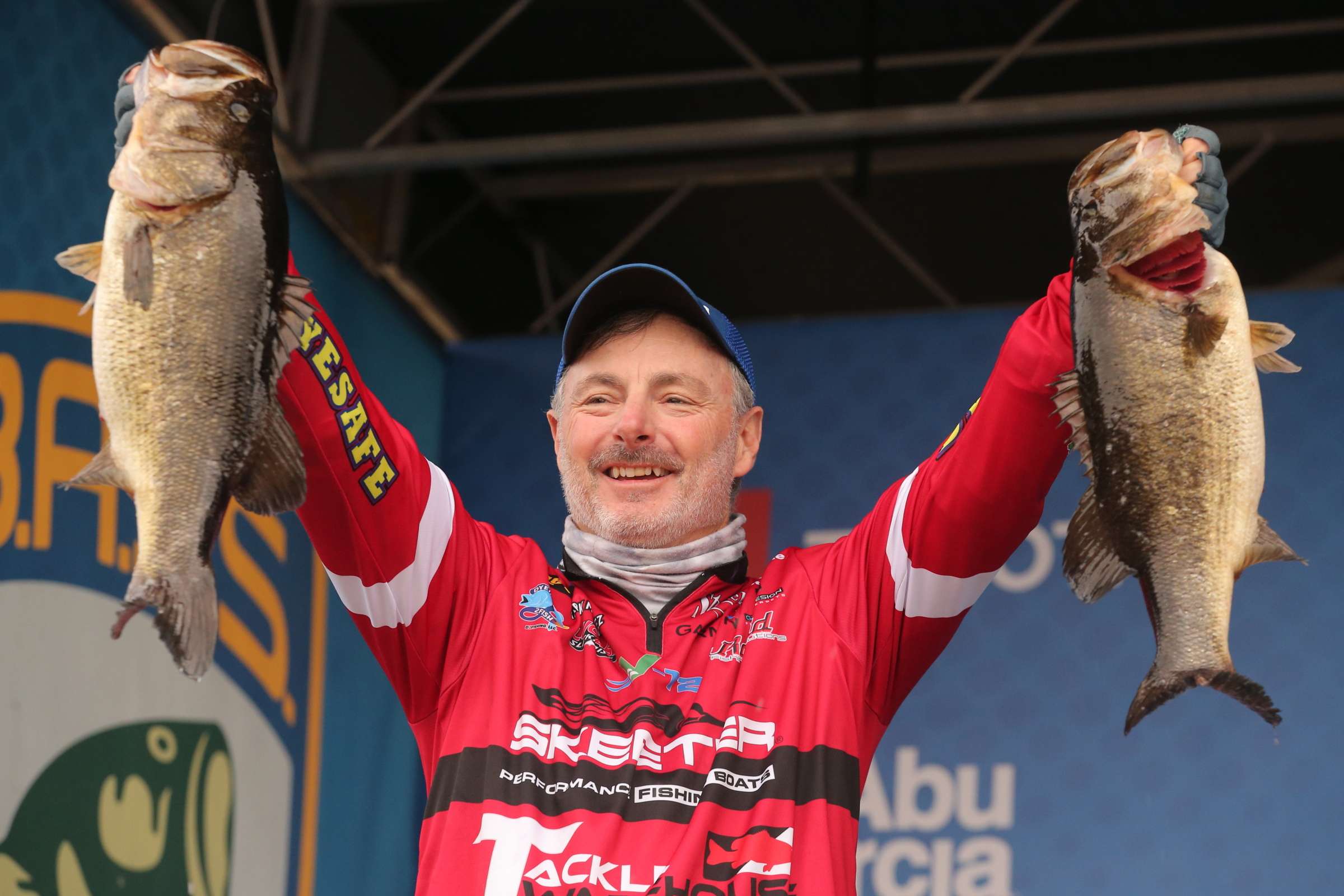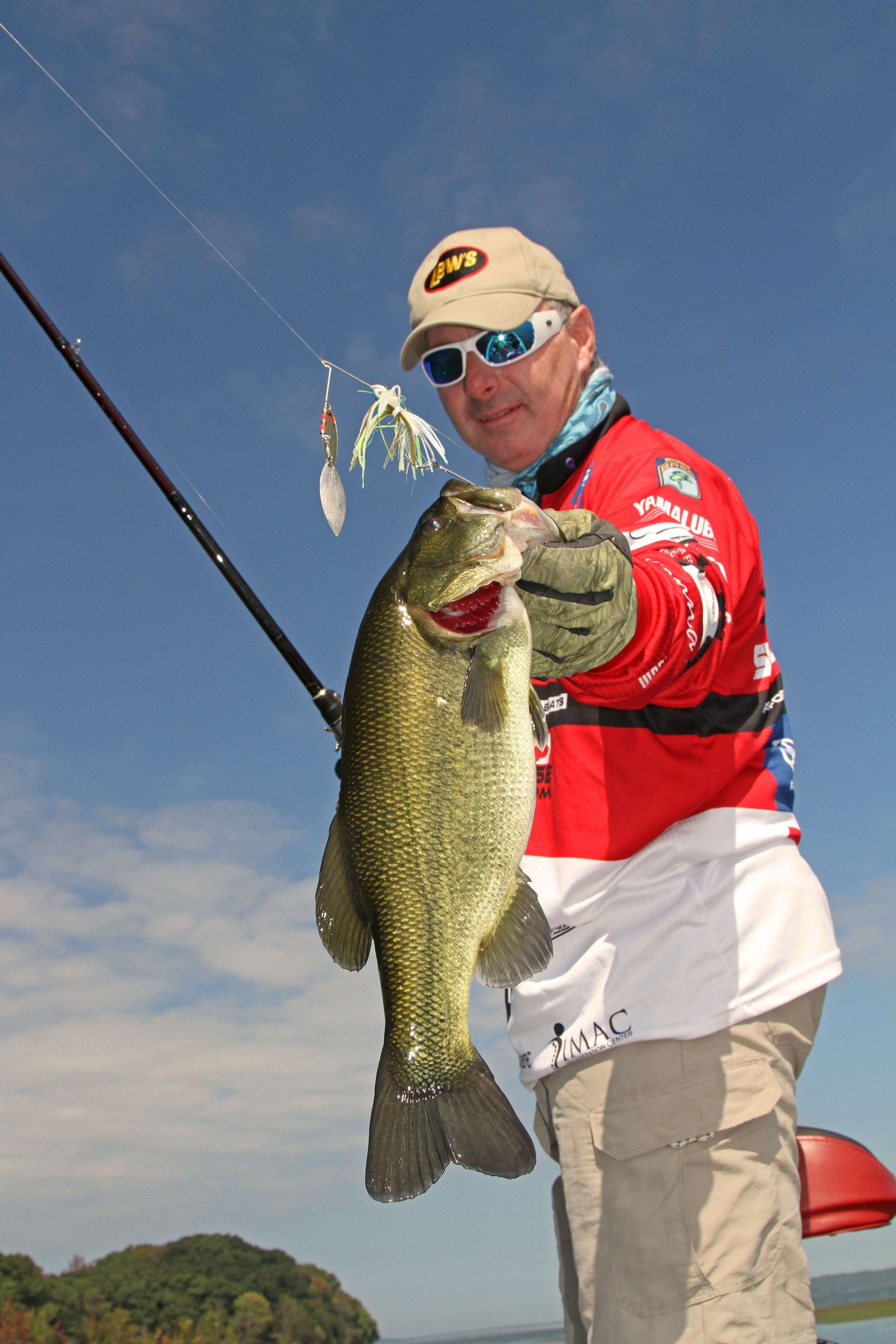
The year’s first quarter is a volatile time, during which cold fronts can unleash meteorological mayhem by way of windy conditions. It’s true that wind can be your friend — and we’ll explain some of that in a moment, but we’d be remiss if we did not start the conversation with safety.
There’s not a bass swimming — not even a double-digit Florida swamp donkey — worth risking anyone’s safety. B.A.S.S. exemplified this angler-first priority by twice postponing the start of the AFTCO Bassmaster Elite at Florida’s St. Johns River, which was originally scheduled to begin on Thursday. With the National Weather Service posting high-wind advisories for Thursday and today, B.A.S.S. officials announced that the event will begin Saturday and conclude on Monday.
Now, assuming safe conditions, consider these insights from Bassmaster Elite Mark Menendez:
Wind level
First priority, Menendez believes, is determining what is too much wind and what is not enough. Location, the specific fishery depth, typically is your most relevant criteria.
“On a day with 20- to 30-mph gusts, depending upon the lake, it can really ignite the (bass); but it can be difficult to fish and you’ll need to use the wind for your presentations,” Menendez said. “On a clear southern reservoir, like Lake Lanier or Lake Hartwell, you want the wind, because it allows these fish to get positioned by breaking up the light penetration in that ultra-clear water that they’re used to.”
In shallow fisheries, such as the St. Johns and many of Florida’s lakes, high winds can quickly disturb mucky bottoms to the point of unfishable turbidity.
“In Florida, you have so much mucky bottom area that the wind can stir up the bottom so much that it absolutely eliminates that (windward area) as unproductive,” Menendez said. “In Florida, you want to fish in the cleanest, clearest water you possibly can because these (Florida-strain bass) tend to bite better in clean water.
“So, if you’re fishing on the east side of the river and you got a 30-mph west wind overnight, that area could be a turbid mess. That’s why you have to make every effort to find protected areas.”
That’s a relevant point at any time of year, but it’s particularly true for spawning season. Bass simply will not bed in areas that could get blown out by a hard wind, so take this into consideration when breaking down a lake and selecting your target areas.
Fish disposition
Investing the time to dial in the right areas for a windy day often will reward you with concentrated opportunities of remarkable predictability. Bass are creatures of strategy, so while they won’t tolerate pounding waves, they will leverage particular angles where wind current creates feeding opportunities by blowing baitfish along ambush routes.
“The fish become much more aggressive and they’re positioned much more dependably,” Menendez said. “Once you figure out how a fish is positioned along that point, that bank, that boat dock, you can literally replicate that anywhere the wind is blowing and it will be very productive.
“On the flip side of that, boat control becomes harder, so you might want to fish with your life jacket on. I’ve caught them in 2- to 3-foot waves where the wind’s blowing you across little ambush points and it was a job to stand up there. If I didn’t have my Swivl-Eze Pro-Pole (pedestal) to lean against, I would certainly have gone swimming.”
Habitat types
Best way to break this down is fixed or moving cover. The former includes riprap, post docks and natural rock; while the latter broadly refers to vegetation.
“In windy conditions, the bass will put distance between themselves and cover,” Menendez said. “If you have a lily pad line that’s moving, they’ll move just outside that cover and find a comfort zone.
“They’ll use rock and other solid cover to break the current, but if the cover is something that moves — brush piles, tree limbs, lily pads — they’ll loosely relate to that.”
Tidal waters
Even in calm conditions, daily ebb and flow fluctuate water levels; but a strong wind can blow a falling tide lower than normal and prevent a rising tide from returning. Understanding your area’s hydrology (ex: the St. Johns flows north) and knowing the daily tide schedule and wind forecast will help you avoid getting stranded in wind-drained areas.
Also, consider the fact that tidal fisheries see the water moving against the wind twice a day and with the wind twice a day (assuming a constant wind direction.)
“I would much rather have that tide going with the wind because it doesn’t create as much rough water,” Menendez said. “When that tide goes against the wind, it stacks up the waves, it makes it harder to get around and it can demolish areas. You’ll have far less turbidity when the tide is going with the wind.”
Winding in the wind
While there’s no denying that big winds bring navigational challenges and shrink the playing field, Menendez points out the upside.
“This is the time to power fish,” he said. “This old-school, hardcore fishing. This is a spinnerbait, a squarebill, a lipless bait, a swimbait. This is making lots of casts with moving baits because the fish are very aggressive.”
Mendez said he’ll keep a Carolina rig, a jig or a Texas rigged worm or craw handy, in case a windy day finds the fish in a pouty mood. He’ll match his weights to the amount of wind and often downsize his line to minimize the amount of casting resistance.
“How the fish are positioned will point itself out really quickly; then you take that knowledge and run with it and you can really focus tightly on your presentations. You’ll know that you only need to fish 15 yards of that point or this corner or that corner. It makes it really simple and really fun.”


